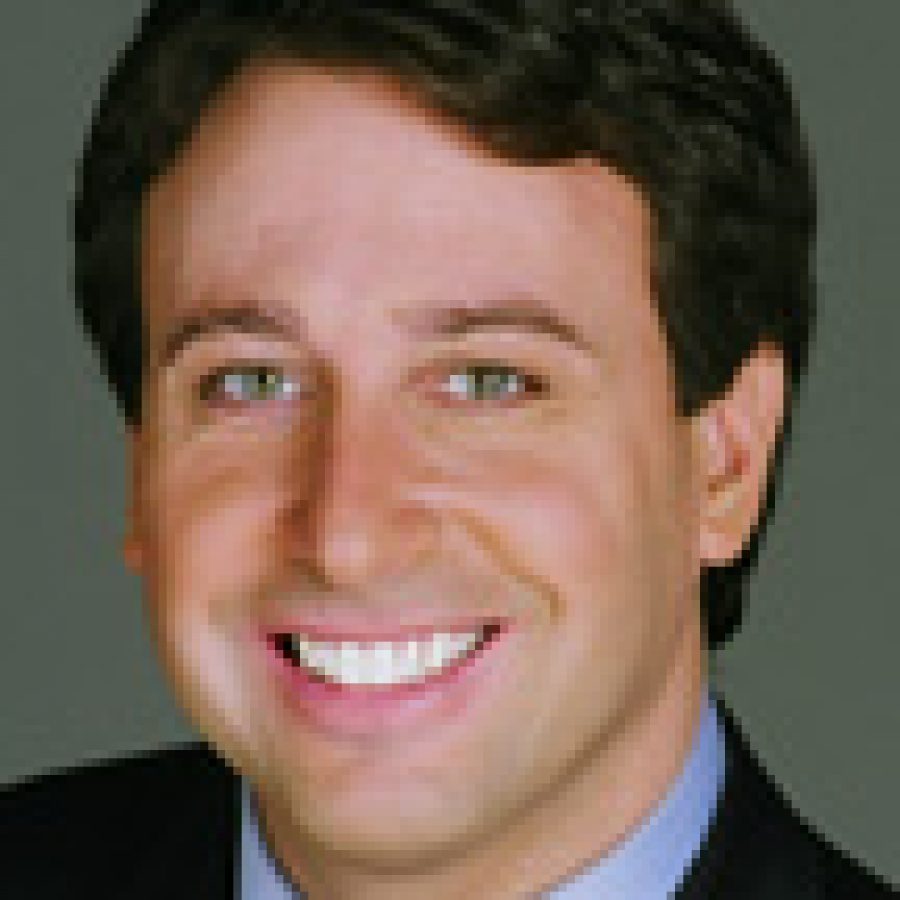While the St. Louis County Council favors County Executive Charlie Dooley’s proposal to reduce the county’s debt-service tax rate, some members want further property-tax reform.
Three of the council’s seven members — 3rd District Councilwoman Colleen Wasinger, R-Town and Country; 6th District Councilman Steve Stenger, D-south county; and 7th District Councilman Greg Quinn, R-Ballwin — said last week that county officials should consider altering the assessment formula to achieve lower property taxes.
Council members also spoke favorably last week about Dooley’s proposal to reduce the county’s debt-service property-tax rate to 2.8 cents per $100 from 6.3 cents per $100. This would reduce the county’s property-tax collection by $8.8 million in 2009 and result in owners of $200,000 homes saving $13.30 on their 2009 property taxes.
While Stenger believes the debt-service reduction is “a step in the right direction,” he would like to see more property-tax re-form with lower assessments.
“I don’t think that it goes far enough,” Stenger said. “I think we also need to have some reassessment reform as well. That could give real tax reform. I’ve got some ideas on that. One such thing would be an inclusion of foreclosure sales and the time that property sits on the market. I think that all needs to be figured in to result in a lower assessed value for everyone.”
Quinn emphasized at the Feb. 3 council meeting that he would “push” to reduce assessments by several methods.
“I’m very much in favor of doing everything we can to reduce assessments,” he said. “I think that what has been said in the past is that there are certain anomalies that won’t be taken into account. I think we should take things into account like foreclosure sales. I think we should no longer keep assessments at a 95-percent level. I think that’s too high. We should go back to what it was before the last round of assessments. So I think it’s really important that we give tax relief to people by reducing assessments. I’m going to push for that.”
While Dooley has asked all local taxing jurisdictions in the county to reduce their tax rates as well, he is concerned that lowering assessments would force local taxing districts to instead raise their rates through the Hancock Amendment to recoup reduced tax revenue.
“You can lower the rates and you can still have a particular tax-levy district ask for additional money,” Dooley said at last week’s council meeting. “You can, under the Hancock (Amendment), get the same amount of money with less assessments.
“So it doesn’t matter about the assessment. That’s what I’m saying. You need to understand that it is the taxing districts themselves and how they tax those districts. Now again, assessment is one thing. The rate is another, OK?,” he continued.
“We have places in some areas in St. Louis County, for example, that are at their lowest rate right now. They couldn’t lower their rates by anything else because they’re at the lowest that the state allows them. And they still need money … When assessments go down, those districts still need X amount of dollars. They still have the ability to raise their tax rate to get the same amount of money … Assessment is one issue. It’s separate than the taxing rate itself by each jurisdiction. There’s a difference.”
“… I would agree that they’re different,” Stenger replied. “But those various taxing jurisdictions have the choice to raise those rates or not.”
“And they do,” Dooley said. “And they do …”
“And we would be in the same place,” Stenger said. “So I would have to disagree.”
Wasinger also believes that county officials should consider reducing assessments.
“Today, I think you’ve shown good leadership in reducing one leg,” Wasinger told Dooley. “The other leg is a reassessment year. And obviously, people are looking for reduction in the assessment level.”
As for Dooley’s proposal to reduce the debt-service rate, Quinn pointed out that he proposed the same move in December 2007 but was rejected by the council and told that lowering the debt service could negatively affect the county’s bond rating.
“When I proposed this reducing the property-tax rate for the debt-service fund back in 2007 … I was told that we couldn’t do that because it might jeopardize the county’s bond rating,” Quinn said. “Now it appears that isn’t the case and wasn’t the case then. So I guess what I would do is I would urge everyone on the council that whenever you hear that argument that something that you’ve proposed to do will jeopardize the county’s bond rating, you should look at it very critically.”
But Dooley said Quinn “misunderstood” in 2007 and that Quinn’s proposal, which Dooley believes was not right at the time, would not have lowered the county’s bond rating.
“I think he’s completely wrong,” Dooley replied. “That was a combination of issues at the time. We were still debating whether to have a general-obligation bond issue for some maintenance problems in St. Louis County. That need still exists today. It is not the right time financially that this country’s in economically … Now you (Quinn) indicated that we said we would affect the county bond. We did not say that.
“Apparently, you misunderstood.”
“Well, it’s in the Post-Dispatch article from Dec. 11, 2007,” Quinn replied. “You can look it up.”
“… This is not the first time that the Post has misrepresented anything and what I’ve said at any given time,” Dooley said. “So to say that it’s in the Post-Dispatch, quite frankly and no disrespect … that’s not a legal document.”
But according to approved minutes of the County Council’s Dec. 11, 2007, meeting, 2nd District Councilwoman Kathleen Burkett, D-Overland, “… (R)elated her concerns with dropping the debt service one more time, noting this could affect the county’s … AAA bond rating and other financial issues facing the county …”
With respect to lowering property taxes, Stenger said he has found no state or county law that would preclude the county from lowering assessments.
The question, he said, then becomes whether local taxing entities would favor property-tax reform.
“If we could lower the assessed value, then on an across-the-board basis across all the jurisdictions that County Executive Dooley was talking about, suddenly the onus is on them,” Stenger said. “The impetus is on them. They have to answer to their constituents.
“I don’t think it’s enough to simply say to them: ‘Hey, we’re going to lower the tax rate. Come join us.’ No. You place essentially the burden on them to either increase or to lower it. And I think that is the only way that we as a county are going to see property-tax levels go down. And that’s the product of what I’m talking about, the final result. Certainly, they are two issues … But at the end of the day, they really become one analytical issue.”









